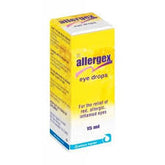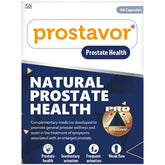Falls
Falls are a leading cause of injury and disability, particularly among older adults. However, falls can affect individuals of all ages and can occur in various settings, including homes, workplaces, and public spaces. Understanding the causes, risk factors, and preventive measures for falls is essential for promoting safety and reducing the incidence of fall-related injuries. This article provides an overview of falls, including their causes, risks, and strategies for prevention.
Causes of Falls
Common causes of falls include:
-
Environmental Hazards:
- Slippery or uneven surfaces, clutter, poor lighting, and obstacles in walkways can increase the risk of falls, especially in homes or public spaces.
-
Muscle Weakness and Balance Issues:
- Weakness in the legs, impaired balance, or gait abnormalities can make individuals more susceptible to falls, particularly as they age.
-
Medication Side Effects:
- Certain medications, such as sedatives, antihypertensives, or psychotropic drugs, can cause dizziness, drowsiness, or changes in blood pressure, increasing the risk of falls.
-
Chronic Health Conditions:
- Medical conditions such as arthritis, Parkinson's disease, stroke, or vision impairment can affect mobility, coordination, and proprioception, predisposing individuals to falls.
-
Footwear:
- Wearing improper footwear, such as high heels, loose slippers, or shoes with slippery soles, can impair stability and increase the risk of falls.
Risk Factors
Risk factors for falls include:
-
Advanced Age:
- Older adults are at increased risk of falls due to age-related changes in strength, balance, vision, and reaction time.
-
History of Falls:
- Individuals who have previously experienced falls are at higher risk of recurrent falls, often due to underlying health conditions or environmental factors.
-
Lack of Physical Activity:
- Sedentary lifestyles and lack of exercise can contribute to muscle weakness, impaired balance, and reduced bone density, increasing the risk of falls.
-
Alcohol and Substance Abuse:
- Alcohol consumption or substance abuse can impair judgment, coordination, and motor skills, leading to falls and injuries.
-
Home and Community Environment:
- Environmental factors such as inadequate lighting, loose rugs, uneven stairs, or lack of handrails can pose hazards and increase the risk of falls.
Strategies for Prevention
Preventive measures for falls include:
-
Exercise and Physical Activity:
- Engaging in regular exercise, including strength training, balance exercises, and flexibility exercises, can improve muscle strength, balance, and coordination, reducing the risk of falls.
-
Home Safety Modifications:
- Removing tripping hazards, installing handrails and grab bars, improving lighting, and securing rugs and carpets can make homes safer and reduce the risk of falls.
-
Medication Management:
- Reviewing medications with healthcare providers, avoiding medications with known fall risks, and following dosage instructions can minimize the risk of medication-related falls.
-
Vision and Hearing Screening:
- Regular vision and hearing exams can detect impairments that may increase the risk of falls, allowing for timely intervention and corrective measures.
-
Footwear and Clothing:
- Wearing supportive, well-fitting footwear with non-slip soles and avoiding loose or restrictive clothing can enhance stability and reduce the risk of falls.
-
Fall Prevention Programs:
- Participating in fall prevention programs or workshops, such as tai chi or balance training classes, can provide education, support, and practical strategies for reducing fall risk.
Conclusion
Falls are a significant public health concern, with the potential to cause serious injuries and impact quality of life. By understanding the causes, risks, and preventive measures for falls, individuals can take proactive steps to reduce their risk and promote safety at home, in the community, and in other environments. Through collaborative efforts among healthcare providers, community organizations, and individuals themselves, we can work towards creating safer environments and preventing falls across the lifespan.
In summary, falls are preventable events that can have serious consequences, particularly for older adults and individuals with underlying health conditions. By identifying and addressing risk factors, implementing practical strategies for prevention, and promoting awareness and education about falls, we can reduce the incidence of fall-related injuries and enhance overall safety and well-being for individuals of all ages.
- Complication of Falls
- Diagnosis of Falls
- Falls
- Falls myths
- How is Falls treated?
- Medicine for Falls
- Remedies for Falls
- Support for Falls
- Symptoms associated with Falls
- The best British Online Pharmacy
- Top 10 UK Pharmacies
- Treatment for Falls
- What causes Falls
- What is Falls
- Where can I buy medicine for Falls in the UK
- ZimSeller Pharmacy



















